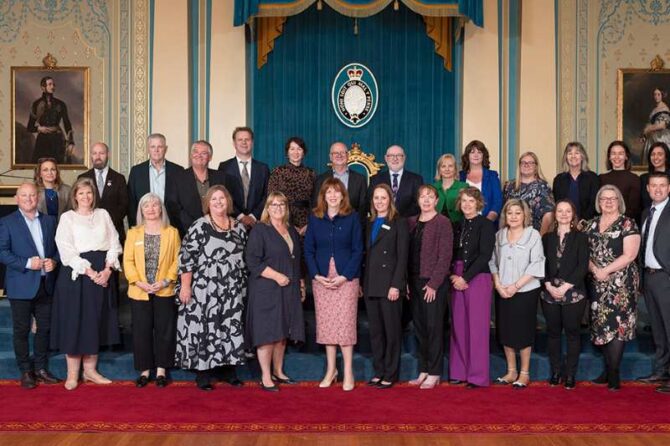
50 years of community health celebrations
Last week our CEO Garry Ellis joined with other Community Health organisations leaders to celebrate 50 years of community health at Government House in Melbourne.
Her Excellency Professor the Honourable Margaret Gardner AC, Governor of Victoria, hosted members of the Victorian Healthcare Association, including BCH, and sector stakeholders to acknowledge and commemorate 50 years since the Community Health Program was established.
Victoria has a proud history of ensuring universal access to primary and community-based care through the community health service model. Community health is an integral component of Victoria’s public health system with a proven track record of delivering accessible, affordable and integrated primary care services for people with complex and chronic health needs, especially those who face barriers to accessing mainstream health services.
The Governor said ‘The introduction of the Community Health Program in 1973 was transformative for Victoria’s healthcare system but also for the millions of Victorians who now rely on it.’
In 1973, the Whitlam Government’s vision for a national Community Health Program was to shift the emphasis of healthcare from treatment to prevention, to provide an alternative to general practice, and to reduce the community’s dependence on hospitals.
At the time, Victoria’s government declined the cost sharing model attached to it, and the Commonwealth responded by providing funds directly to community groups, who established Victoria’s first community health services. BCH was one of the very first community health centres with the establishment of the Queenscliff and District Community Health Centre.
VHA CEO Leigh Clarke, said that the community health model has continually evolved to meet changing needs and tirelessly demonstrated its ability to provide evidence-based and people-centred care. ‘Community health services know their local communities best. They reduce demand for hospital services and address the social determinants of health to stop people from getting sick in the first place,’ she said.
‘As the Australian Government looks to enable significant changes to the funding and delivery of primary care, we see a huge opportunity to scale up the community health model nationwide. Community health services are poised to support state and territory governments with the implementation of the Strengthening Medicare Taskforce recommendations.’
Victorian Government Health Minister Mary-Anne Thomas said that Victoria is very fortunate to have a diverse, vibrant and resilient community health sector. ‘Community health has evolved a lot over the last 50 years, from a fledgling movement through to being a major partner in Victoria’s COVID-19 response. ‘No other state has a resource quite like this, which is why the Allan Labor Government is committed to supporting our state’s community health sector so it continues to serve their communities and play a critical role in Victoria’s public health system,’ Minister Thomas said.
History of community health
Community health was first established in 1973 under the Whitlam Labor government, the program was called the ‘Community Health Program’.
By 1976, the national Program funded over 700 projects and services, including community health centres in metropolitan and rural areas, women’s refuges and health centres, family planning services, Aboriginal community health services, workers health centres, specialist training for general practitioners and foundation chairs of Community Medicine in universities.
The program formally ended by 1981, but community health centres and services continued and developed differently in each state or territory.
Today in Victoria community health is an integral component of Victoria’s public healthcare system.
Leave a reply

